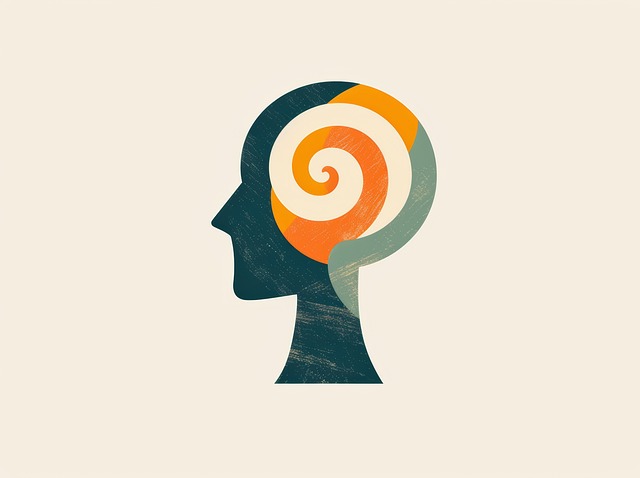Cultural Competency Training: Enhancing Elderly Patient Care & Overcoming Therapy Barriers
Cultural competency in healthcare is vital for effective treatment of older adults with adjustment d…….
In the rapidly aging global population, understanding and addressing mental health challenges among elders have become paramount. Among these challenges, Therapy for Elders Adjustment Disorder (TEAD) stands out as a complex yet crucial area of focus. This comprehensive article aims to explore every facet of TEAD, offering valuable insights into its definition, impact, and future potential. By delving into its historical roots, global reach, economic implications, technological innovations, regulatory frameworks, and the challenges it faces, we can appreciate the significance of TEAD in ensuring a better quality of life for our aging population.
Definition:
Therapy for Elders Adjustment Disorder (TEAD) is a specialized form of psychological treatment designed to assist elders—typically individuals aged 65 and above—in coping with significant changes, transitions, or losses in their lives. It addresses the emotional and mental adjustments required as one navigates aging, retirement, bereavement, or chronic illness.
Core Components:
Historical Context:
The concept of TEAD has evolved over the past few decades, gaining recognition as a distinct field within geriatric mental health. Early approaches focused primarily on treating dementia and depression in elders, but the 1980s marked a turning point with increased awareness of the unique challenges associated with aging. The World Health Organization (WHO) played a pivotal role in shaping global understanding by integrating TEAD into its guidelines for mental health care among older adults.
Significance:
TEAD is vital for several reasons:
TEAD’s influence extends across continents, shaped by cultural, social, and economic factors unique to each region.
| Region | Trends and Observations |
|---|---|
| North America | High adoption rates of TEAD due to an aging population and advanced healthcare infrastructure. The United States, in particular, has seen increased funding for geriatric mental health services. |
| Europe | Diverse approaches with strong public healthcare systems offering comprehensive TEAD programs. Countries like Germany and the UK have led in research and policy development. |
| Asia-Pacific | Rapidly growing elderly population drives demand for TEAD. Cultural norms and family structures significantly influence service delivery, with community-based programs gaining traction. |
| Middle East & Africa | Limited resources and infrastructure pose challenges. However, initiatives by global health organizations are increasing access to TEAD in these regions. |
Key Global Initiatives:
The economic landscape surrounding TEAD is complex, with various stakeholders and market dynamics at play.
Market Dynamics:
Investment Patterns:
Economic Impact:
Technology plays a transformative role in modern TEAD practices, improving accessibility and outcomes.
Telehealth and Digital Therapy:
Data Analytics and Personalization:
Research and Innovation:
Regulatory frameworks play a critical role in ensuring ethical and effective delivery of TEAD services.
Global Policy Scenarios:
Key Considerations:
Despite its potential, TEAD faces several challenges that require strategic solutions.
Common Challenges:
Proposed Solutions:
Case Study 1: Community-Based Approach in Japan
Japan’s successful implementation of community-based TEAD programs is a notable example. The “Nichi-nin (Nine-to-Five) Club” initiative provides social support groups for older adults, combining peer mentorship with professional counseling. This approach has led to improved emotional well-being and reduced hospitalization rates among participants.
Case Study 2: Digital Therapy in the UK
The UK’s “Mindful Elderly” program uses digital therapy platforms to deliver cognitive-behavioral interventions remotely. The study showed significant improvements in depression and anxiety symptoms, with high participant satisfaction due to its convenience and accessibility.
Case Study 3: Intergenerational Program in Canada
Canada’s “Bridge the Gap” initiative connects elders with young adults through intergenerational programs. This unique approach fosters social connections, improves cognitive function, and enhances overall life satisfaction for both age groups.
The future of TEAD is promising, with emerging trends shaping its evolution.
Growth Areas:
Emerging Trends:
Therapy for Elders Adjustment Disorder is a dynamic field that has significantly evolved over the years, addressing critical mental health challenges among our growing elderly population. From global awareness and policy developments to technological innovations, TEAD continues to gain momentum. By overcoming challenges through strategic solutions, we can ensure that elders worldwide have access to high-quality, personalized TEAD services.
As we look ahead, the future of TEAD holds immense potential for positive impact, with opportunities arising from digital transformation, integrated care models, and a deeper understanding of aging minds. Continued investment, research, and collaboration are essential to unlock these possibilities and improve the lives of millions of elders worldwide.
Q: What types of adjustments do elders typically struggle with?
A: Elders may face various adjustments, including retiring from work, dealing with loss (such as a spouse or friends), managing chronic illnesses, moving to new living arrangements, or adapting to technological changes.
Q: How does TEAD differ from general counseling or psychotherapy?
A: TEAD is specialized for elders, focusing on unique challenges associated with aging. It considers the complex interplay of psychological, social, and physical factors that influence emotional adjustments in later life.
Q: Can TEAD be provided remotely through telehealth?
A: Absolutely! Telehealth platforms offer flexible and accessible options for TEAD, allowing elders to receive therapy from home. This is especially beneficial for those with limited mobility or living in rural areas.
Q: What are some signs that an elder might need TEAD?
A: Signs can include persistent feelings of sadness or anxiety, increased social isolation, irritability, difficulty sleeping, changes in appetite, and a lack of interest in activities once enjoyed. If these symptoms persist for more than two weeks, it’s advisable to seek professional help.
Q: How effective is TEAD in preventing dementia?
A: While TEAD primarily focuses on adjusting to life changes, it can contribute to overall well-being, which is linked to reduced risk of cognitive decline and dementia. However, it should be noted that TEAD does not directly prevent dementia but supports elders in maintaining mental resilience.

Cultural competency in healthcare is vital for effective treatment of older adults with adjustment d…….